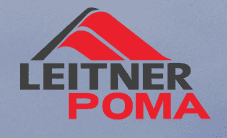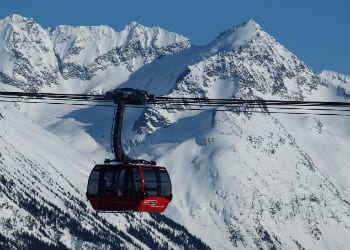 Leitner-Poma, one of two major ski-lift manufacturers in the world, maintains 430 lifts across North America, New Zealand, and Australia. The trick to keeping all of them running smoothly? A year-round service operation that doesn’t quit.
Leitner-Poma, one of two major ski-lift manufacturers in the world, maintains 430 lifts across North America, New Zealand, and Australia. The trick to keeping all of them running smoothly? A year-round service operation that doesn’t quit.
In fact, the offseason is often just as busy, says Tom Clink, a Leitner-Poma service representative in Grand Junction, Colo. The company, whose roots trace back to Italy in 1888, juggles operations by shifting maintenance check-ups and new installations to the offseason so it can focus on emergency repairs during peak times. We talked to Clink about how Leitner-Poma makes it work:
Precision Engineering
The first step in setting up a ski lift is the planning and engineering phase. Typically, lift companies will be replacing or upgrading an existing lift. Sometimes they’re asked to  develop a new part of the mountain, in which case they calculate load and unload points, and then determine what kind of lift is required based on the distance it needs to travel and the load capacity. According to Clink, Leitner-Poma often works with the forestservice to do a ground survey, so it can lay out plans for the lift, decide how many towers it will include, how much horsepower it needs and any other equipment logistics. Once the blueprint is complete, the installation process can begin.
develop a new part of the mountain, in which case they calculate load and unload points, and then determine what kind of lift is required based on the distance it needs to travel and the load capacity. According to Clink, Leitner-Poma often works with the forestservice to do a ground survey, so it can lay out plans for the lift, decide how many towers it will include, how much horsepower it needs and any other equipment logistics. Once the blueprint is complete, the installation process can begin.
Installation and Setup
Leitner-Poma manufacturers all its components at its headquarters in Colorado, then ships them to resorts. Installations typically take four to five months, usually between June and November. Clink says it doesn’t take that much manpower to install a lift — a general manager and two or three installers can usually handle the job in a couple of months. The company hires several seasonal employees to dig up the tower holes, pour concrete, and set the towers. (Those workers then usually spend the winters as ski instructors or ski patrol, he says.) “It doesn’t take a lot of equipment. It takes [labor] time and travel time,” Clink says. “Each project is different, but typically it’s just a summer’s worth of work.”
Service Training for Resorts
During the winter months, the company dispatches its team of 14 technicians to handle major maintenance and repairs. But Leitner-Poma handles smaller maintenance jobs by training local ski resort technicians. If something bigger comes up, like a gearbox or electric motor failure, the resort can call the manufacturer and either receive help over the phone or, if it’s serious, the company will fly a tech out to the site. Each job is different, which requires the company to be innovative and flexible. “Keeping up with manufacturing technology is difficult,” Clink says. “We’re offering a standard product with specific components that are specific for a particular system – it’s not your normal manufacturing process.”
More field service job profiles:
How to Service a Zamboni; The Good, Bad, and Ugly of Port-o-John Cleanup; Afraid of Heights? Don’t Become a Wind Turbine Technician; The Strange, Bloody, and Mundane World of Crime Scene Cleanup.
Click here to download a free whitepaper, “Five Steps to Make Field Service Profitable.”


Close the door after you
It’s impressive to learn that Leitner-Poma, with its century-old roots, meticulously plans and engineers each lift installation, considering factors like load capacity and distance. The dedication of their seasonal employees, who transition from setting up towers to becoming ski instructors or ski patrol during the winter, showcases the unique camaraderie within the industry. Knowing that Leitner-Poma prioritizes service training for local technicians and offers innovative solutions for maintenance challenges gives me confidence in the safety and reliability of ski lifts wherever I go.